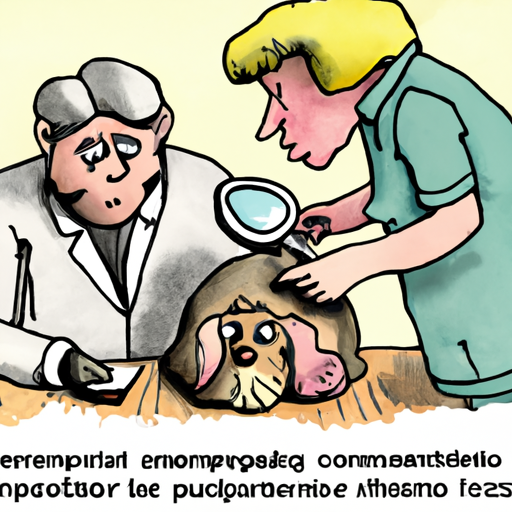As a devoted pet parent, the discovery of a lump or bump on your beloved canine companion can cause understandable concern. However, not all lumps are cause for alarm. This comprehensive guide delves into the various causes of lumps in dogs, how to identify them, and what steps to take should you find a lump on your dog.
Table of Contents
- Common Causes of Lumps in Dogs
- Differentiating Between Types of Lumps
- What to Do if You Find a Lump
- Steps to Prevent Lumps in Dogs
-
FAQs
-
Key Takeaways
- Not all lumps are dangerous, but all should be checked by a vet
- Regular grooming and petting can help detect lumps early
- Prevention measures are crucial for your dog’s overall health
Common Causes of Lumps in Dogs
Infections and Abscesses can lead to the development of lumps on your dog’s skin. An abscess is a pocket of pus that forms when the body is fighting off an infection. These lumps can be quite painful for your dog, and may require antibiotic treatment or even drainage by a vet.
Cysts are sac-like pockets of tissue that contain fluid, air, or other substances. They’re usually benign, but can cause discomfort if they rupture or become infected. These are often caused by blocked sebaceous glands. Here is a helpful article on how to identify and treat sebaceous cysts in dogs.
Tumors, or neoplasms, are growths that occur when cells in the body divide and grow in an uncontrolled way. Tumors can be benign (harmless) or malignant (cancerous). The One Top Dog blog has helpful resources on dog health, including a post on canine cancer, that can provide more information on this topic.
Differentiating Between Types of Lumps
Fatty tumors, also known as lipomas, are typically soft, movable lumps that grow slowly. They’re often found in older or overweight dogs.
Mast cell tumors are a type of cancerous tumor that can vary in appearance. They can be small, large, soft, hard, covered in hair, or bald. These tumors can spread to other parts of the body, so early detection and treatment are crucial.
Histiocytomas are benign skin tumors that are common in young dogs. They typically appear as small, firm, dome-shaped lumps and often disappear on their own.
With a wide variety of lumps that can appear on your dog’s body, it’s important to have any new growth checked by a vet. Regular grooming and petting can help you detect any new lumps or changes in existing ones.
What To Do If You Find a Lump
If you find a lump on your dog, don’t panic. Many lumps are harmless and easily treatable. However, you should still take your dog to the vet for a check-up. Your vet will likely perform a procedure called a fine needle aspirate to collect cells from the lump for examination under a microscope. This can help determine if the lump is benign or malignant.
Steps to Prevent Lumps in Dogs
While you can’t prevent all lumps and bumps in your dog, there are steps you can take to promote overall health and possibly reduce the risk.
- Maintain a healthy weight. Overweight dogs are more prone to developing certain types of lumps, such as lipomas.
- Regular check-ups. Regular vet check-ups can help detect any health issues early.
- Good grooming habits. Regular grooming and petting can help you notice any changes in your dog’s skin.
FAQs
Q: Are all lumps in dogs cancerous?
A: No, not all lumps are cancerous. Many lumps are benign and harmless. However, any new lump should be checked by a vet to rule out cancer.
Q: Can lumps in dogs go away on their own?
A: Some types of lumps, such as histiocytomas, can disappear on their own. However, you should still have any lump checked by a vet to ensure it’s not a sign of a more serious condition.
Q: Can I prevent my dog from getting lumps?
A: While you can’t prevent all lumps, maintaining your dog’s overall health can help. This includes regular vet check-ups, a healthy diet, and regular grooming.
In conclusion, the discovery of a lump on your dog can be worrisome, but many lumps are harmless and easily treated. Regular petting, grooming, and vet check-ups can help detect lumps early and keep your furry friend in the best possible health. For more information on dog health, check out One Top Dog’s extensive library of resources, including their article on common health problems in dogs.



